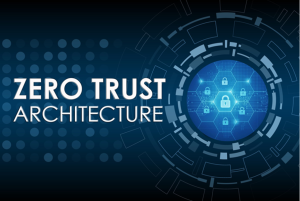
Pandora confirmed the stolen customer data, which includes email addresses, birth dates, and names. Significantly, the company provided clear information regarding breach of passwords, IDs, or financial details pertaining to this breach. However, Pandora’s official statement did not mention the breached platform. Later, BleepingComputer identified the breached platform as Pandora’s Salesforce database. This immediately emphasizes the key importance of third-party Software-as-a-Service (SaaS) platforms to an organization’s overall security posture, as 82% of data breaches involve cloud-stored data.

The attackers, the ShinyHunters gang, did not even exploit a vulnerability on Salesforce’ own platform. Rather, they leveraged sophisticated social engineering and phishing campaigns. These methods were designed to manipulate employees into revealing Salesforce credentials or consenting to permissions for hostile OAuth applications, and gaining access to the company’s Salesforce database without authorization. This aligns with shocking figures showing that 86% of data breaches are facilitated by stolen credentials, an amount which rose by 71% year over year. The human element is invariably the most prevalent threat vector, and is responsible for 68% of breaches. The advent of generative AI has further fueled this, as phishing attacks have risen by a whopping 4,151% since ChatGPT became public, which has made these social engineering attacks even more advanced and harder to detect by humans. This is an attack tactic change where attackers are attacking weaknesses in the supply chain—i.e., how organizations secure their access to third-party cloud services that are critical to them—instead of attacking through the main target directly.
ShinyHunters announced that they are extorting victimized firms privately, threatening an enforced sale in bulk or data leakage unless ransom is paid, as they do in Snowflake data-theft attacks. This indicates an ominous trend in which attackers favor data theft and leakage more and more over encryption for extortion. Interestingly, these Salesforce-based assaults continue unabated, impacting other well-known brands such as Adidas, Qantas, Allianz Life, and LVMH subsidiaries.
Securing Your Defense: Most Important Cloud Security Principles
One of the pillars of cloud security is the knowledge of the shared responsibility model. While CSPs such as Salesforce protect the underlying infrastructure, customers must protect their data, applications, identity, and access within the cloud environment. In SaaS platforms, this translates to organizations being solely responsible for user security, data protection, and endpoint security.
Having good Identity and Access Management (IAM) policy is a top defense strategy. This includes mandating Multi-Factor Authentication (MFA) for all access to the cloud, especially for critical SaaS apps like Salesforce. Implementing least privilege means users only receive the privileges required by their job role. Because of the prevalence of social engineering, constant and dynamic employee education is not a choice. Educating the workforce to recognize and report sophisticated phishing, pretexting, and Business Email Compromise (BEC) attacks, particularly those powered by AI, is crucial. Real-life examples, such as a BEC that swindled a non-profit out of $650,000, illustrate the potential dangers.
Proactive security controls are needed. Organizations must incorporate ongoing monitoring and logging of cloud environments to discover out-of-pattern behavior in real-time. Having and routinely keeping a good incident response plan is critical in order to quickly identify, segregate, and recover from breaches because breaches that involve compromised credentials have a 292-day average time to detect and contain. Also, encrypting sensitive information both “in transit” and “at rest” with strong encryption methods like AES-256 and secure communication protocols is significant. Finally, but far from least, performing frequent security testing, such as vulnerability scanning and penetration testing, aids in discovering and relieving cloud configurations and application vulnerabilities. This integrated approach, combining technical controls with human-driven defenses and planning, is central to an ever-changing security posture.




